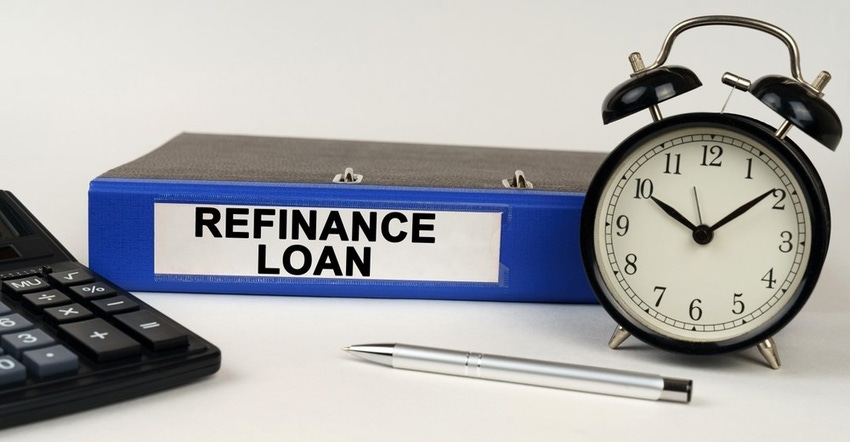Self-Storage and CMBS Debt: Is Now a Good Time to Refinance?
If you funded your self-storage facility with a commercial mortgage-backed securities (CMBS) loan, you may be wondering whether now is a good time to refinance. With a host of unpredictable forces that could impact interest rates in 2023, there’s a lot to consider. Let’s look at some of your options, plus guidance on how best to proceed.
April 26, 2023

It’s hard to believe that a decade has gone by since you secured a fixed-rate CMBS (commercial mortgage-backed securities) loan for your self-storage facility. You’re shocked as you consider that the same financing would be priced in the 6.25% to 7% range today. Most storage properties have increased significantly in value in recent years, so your loan-to-value (LTV) on a refinance would be attractive, unless you’re looking to take cash out.
So, now you have a decision: Do you refinance and possibly deal with a defeasance prepay penalty in hopes of achieving a decent rate, or do you wait and see where rates are when the penalty burns off? Let’s explore your options.
The Prepay
The 10-Year Treasury Rate ranged from about 1.75% in early 2013 to 3% by year end. If you financed a self-storage property that year, most likely, your overall interest rate is in the 3% to 4.5% range. Today, the 10-Year Treasury is about 3.3%. Since the defeasance penalty is based on the remaining loan term (in this case, one year), which would be about 4.5%, you’d likely not be subject to any penalty to pay it off early other than the defeasance costs. This would be about $40,000, but it could be lower if your actual rate is less than the current one-year Treasury rate as you would benefit in that scenario.
Today’s 10-year fixed-rate money can range from 5.5% to 6.5% with life companies, 5.75% to 7% with a bank or credit union, and 6.25% to 7% with CMBS. While these may seem high compared to recent years, they’re still below what was historically considered “normal” or “a good rate.” The big question is what rates will do in the next six to 12 months.
Even a .5% increase can cost you significant interest expense in the long term. Many people think rates will come down in the next three to five years, so they’re opting for a shorter, fixed-rate term. That said, the five-year rates could actually be higher than the 10-year rates, as the five-year Treasury is currently higher given the inverted yield curve. Nonetheless, if you’re a believer in rates stabilizing and coming down, this is a good way to go.
Another Path
Since the 10-year rates aren’t much higher than the five-year rates (if at all), a good way to go is a 10-year fixed loan with minimal or no prepay penalty. This would allow you to take advantage of today’s rates in case rates stay high. You’ll also have flexibility to refinance if rates come down. However, unlike life-company and CMBS, most of these bank or credit-union loans will be recourse with personal liability.
While CMBS financing comes with yield maintenance or defeasance, you could consider refinancing with a life-company loan. There are some with prepayment flexibility. For example, one offers 2% in years one and two, then 1% thereafter. Not horrible, but not yield maintenance and nonrecourse. Some life companies can even structure prepayment penalties around a borrower’s needs. There are also a number of banks that can offer nonrecourse with step-down prepayment penalties. A few credit unions can do the same with a conservative LTV.
If you do refinance with a life company, another advantage is the ability to do a forward rate lock, whereby your rate is locked in today but the loan isn’t funded for 90 days to 12 months, sometimes longer. Stretching out the lock period allows you to wait until your prepayment penalty burns off. If you’re currently in a CMBS loan, this means you wouldn’t have to pay defeasance.
Weighing the Choices
We’re in very uncertain times filled with political conflicts, inflation, supply-chain shortages, energy problems, employment issues and other events. Where are we headed, and what external forces may change the lending landscape? These are important questions to consider when thinking about whether to refinance your self-storage loan now or wait until loan maturity. There’s no magic answer, and I’m not sure you would get a consensus.
All I can refer to is history. In 1996, when I started in this business, a 10-year fixed rate at 8% was considered good. We’re getting close to that again. This is more normal than the amazing rates we’ve been experiencing for the past few years. Not too long ago, the 10-Year Treasury decreased a paltry .52%. The prime rate was 3.25% in March 2020; now it’s at 7.5% and climbing.
Now is a good time to renegotiate your rate with your current self-storage lender and, if possible, lock in for at least another three to five years. If you’re a long-term investor, lock it for 10.
The lending landscape is still reasonably attractive for quality deals. A mortgage professional can help you navigate the market and provide loan options outside your current bank or credit-union lending relationship.
David Smyle is a vice president of San Diego-based Pacific Southwest Realty Services, a commercial-mortgage banking firm founded in 1972. It represents life-insurance companies, banks, private capital and other credit facilities seeking investment in real estate secured assets. Smyle was previously the owner and president of Benchmark Financial for 16 years and spent 12 years in commercial banking. To reach him, call 858.522.1411; email [email protected].
About the Author(s)
You May Also Like





